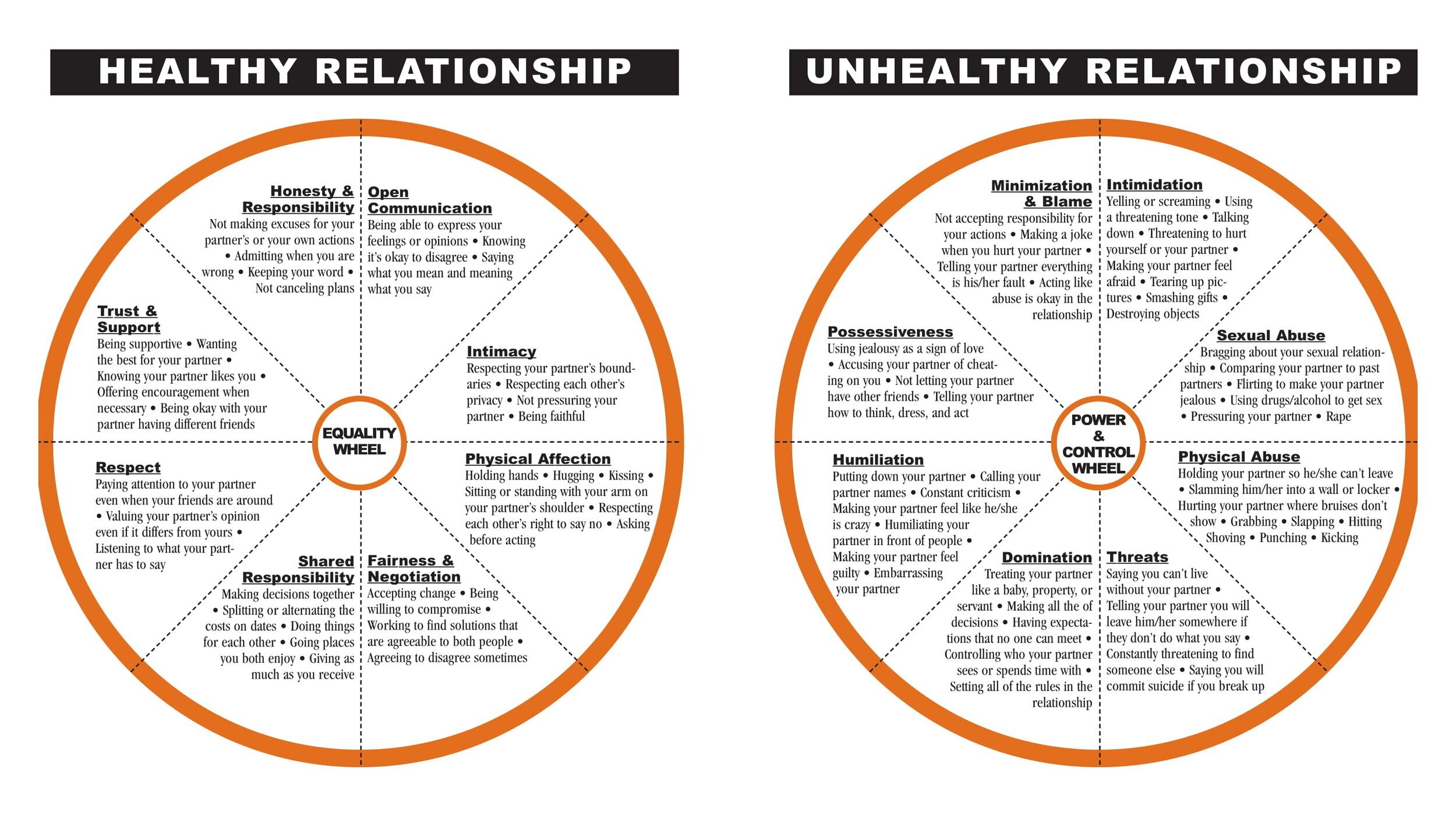What makes a relationship healthy
spotting red flags & setting boundaries
We’ve talked a lot about relationship struggles, toxic relationships and how to spot toxic behaviors in others and how to spot them in ourselves. Today, we’re focusing on how to identify, nurture, and maintain healthy relationships, how to spot red flags, and how to set effective boundaries, because we all deserve to cultivate happy, healthy relationships!
To begin understanding healthy relationships first consider what you know about love and relationships. What are your early memories of relationships? Think back to your parents or other partnerships you witnessed growing up. Do you have a current definition of a working relationship? We can gain valuable information about ourselves by reflecting on past observations and patterns.
Second, consider your level of self-worth. How do you treat yourself? How do you talk to yourself? Do you believe you are worthy of love, kindness, and respect?
Next, take time to understand your attachment style. Knowing our attachment style can be a helpful tool in developing and maintaining healthy relationships with ourselves and others. Take an attachment style test here!
Can you have a healthy relationship if…
You have been wounded
You have been abandoned
You have unhealthy behavior patterns
YES! It is our nature to give and accept love. Everyone is capable of this through self-work, healing, growth, and knowledge.
What makes a relationship “healthy”
Common interests, goals and shared values
Consistent dependability and reliability: are you there for each other?
Gentle conflict and arguments
Emotional connection and ability to repair disconnection - secure attachment
Healthy dependence
Affection (connection through touch and words)
Alert & Aware: Red Flags
Emotional unavailability & unwillingness to communicate
Lack of ownership, minimization, blaming (gaslighting)
Unpredictable behaviors (e.g. reactive, untrustworthy, aggressive)
Insecure and unsafe in a relationship: emotional or physical
Lack of trust; jealousy as a sign of love
Intimidating and controlling behaviors; possessiveness and domination
Humiliation
Unhealthy sex life. Sex is used as a weapon (e.g. force)
Progression of disrespect
Losing yourself (loss of identity)
Give too much or work too much in the relationship. Don’t know when to stop giving.
Deception: feelings, relationships, past, personal preferences, or reality itself (factual lies) such as:
Lying about whereabouts
Lying about finances
Lying about substance abuse
Lying about seeing or being with someone else
Lying about their achievements
Love bombing
Co-dependency
Score keeping
Overall chaos and drama
Romanticizing
Equality Wheel vs. Power Control Wheel
Equality wheel vs. power Control wheel
Relationship checkup
Similarly to how we evolve individually, our relationships are constantly developing. Use the following points to facilitate a relationship checkup at any point in your relationship:
Intimacy (relationship satisfaction, romance, admiration, emotional engagement, breakup proneness)
Stability & commitment (trust, chaos, commitment, and emotional philosophies)
Conflict management & stress
Connectedness (shared rituals, values, and goals in a relationship)
Areas of concern: individual risks, safety, sex depression, drug and alcohol use, domestic violence, anxiety, and other psychological or psychiatric issues requiring attention
Boundaries: what are they and what they do
What are they
Internal and external structure and limits
Not barriers or selfishness
Personal property line: what belongs to you or someone else
“When we don’t have clear limits, we can expose ourselves to unhealthy and destructive influences and people”
wHAT THEY DO
Powerful and helpful tools to help and protect us
You are responsible for your boundaries. If someone else is controlling your love, emotions, or values, they are not the problem. Your inability to set limits on their control is the problem
What will you tolerate?
Good boundaries will help you choose better quality people
Poor boundaries lead to:
Resentment, anger, burnout, mental distress, etc.
Chronic unhappiness, toxic or dysfunctional relationships
Too many boundaries (too rigid) causes problems too
poor boundaries can look like:
Putting up with behavior that is disrespectful
Giving in to things that are not in accord with your values
Settling for less than you know you really desire or need
Staying in a relationship that you know has passed its deadline
Going back into a relationship that you know should be over
Getting into a relationship that you know is not going anywhere
Smothering the person you are dating with excessive needs or control
Types of boundaries
Emotional
Physical
Intellectual
Sexual
Material
Time
3 steps required for a boundary to be effective
Step One: Identify your need
Ask yourself:
What are my triggers?
What is something that doesn’t work or serve me anymore?
What patterns or cycles am I trying to break?
Example: I say “Yes” when I really meant to say “No”. I need to say no to things I don’t have the capacity, time, or desire to do.
Remember, “No” is a complete sentence.
Step two: set the expectation
Communicate and express your needs and boundaries.
Example: I will say “No” when I need or want to say no. I will decline without over explaining myself, making excuses, lying or apologizing.
This sounds like: “Thanks for thinking of me, I am unable to take any more tasks at the moment.”
Step three: honor the boundary
Do what you said you would do (i.e. don’t take any more tasks until you’re ready).
Be consistent.
Don’t be too flexible to make other people comfortable and happy.
Remember why you’re setting the boundary in the first place.













High-Functioning Anxiety is a complex and often misunderstood experience. The iceberg metaphor serves as a visual representation of the layers of emotions and pressures that people with HFA typically navigate beneath the surface.